LOCATION
Jammu and Kashmir (J&K), India
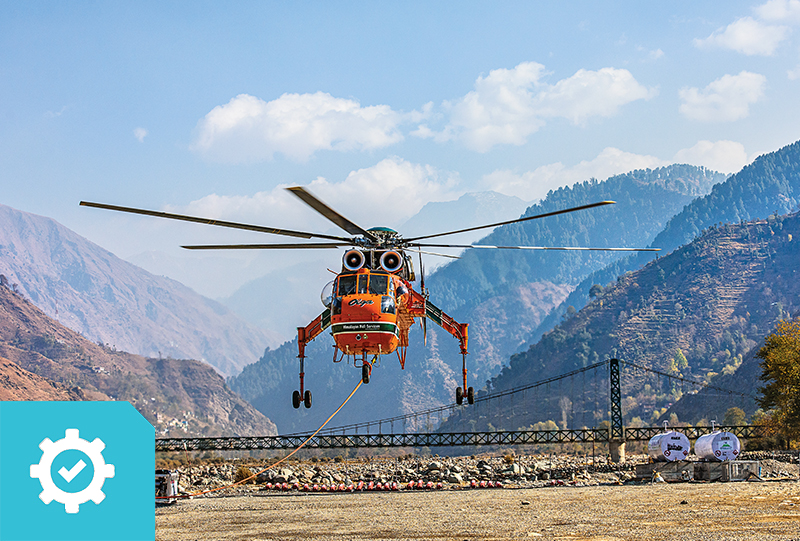
This northernmost region of India faces severe power deficit, crippling daily life and adversely impacting its path to progress. The problem gets a lot worse during the harsh winters, as less hydropower is generated. There was a need to connect the Valley with the Northern Grid via a reliable transmission corridor.
We tackled extreme conditions of terrain and weather. This one-of-a-kind project passed through great altitudes, including the mighty Pir Panjal range in J&K, which remains inaccessible for six months during winters. Another challenge was the distance of the project site from the nearest roadway, making movement of tonnes of materials a considerable task.
We leveraged advanced technology and superior innovation, across the life cycle of the project. Helicranes were used to deliver more than 3,500 tonnes of materials to the site safely. Drones and helicopters were used to supplement the functioning of the helicranes, with a range of activities from wire stringing to providing aerial surveillance.
With an indomitable determination to succeed even in the toughest of conditions, we completed the project two months ahead of schedule. Today, the NRSS 29 is delivering more than 1,000 MW of reliable power from Punjab to the Kashmir valley.
WHAT WE DID
We built an alternate power corridor. The 414-km-long Northern Region Strengthening Scheme XXIX (NRSS 29) is one of the biggest private sector transmission projects. It comprises one 400/200 kV GIS substation and three 400 kV double circuit transmission lines through the states of Punjab and J&K.
LOCATION
Pernambuco, Brazil
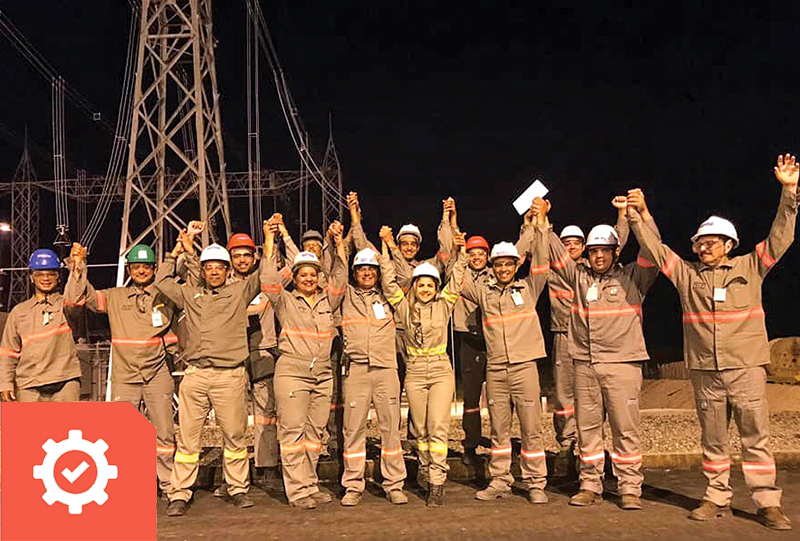
We won the Arcoverde (literally the ‘Green Arch’) project, our very first on foreign soil, in an auction conducted by the Brazilian Electricity Regulatory Agency (ANEEL) in April 2017. The concession was signed in August 2017. This project was key to establishing our credibility as a trusted transmission player in the country.
Considering our first project on foreign lands, the Arcoverde project was faced with two major challenges - attaining financial closure for the project and obtaining the various environmental clearances for the project.
Our first foray into Brazilian territory notwithstanding, we attained financial closure for the project within a short period of time. We generated ~800 jobs through the course of the project in the region. We obtained the required environmental license in record six-and-a-half months. What’s more, we successfully completed the project a whopping 28 months ahead of the schedule set by ANEEL. Not only did this exemplify our project execution capabilities, it helped us showcase how power infrastructure can serve the country’s grid.
WHAT WE DID
We began the project implementation with diligent planning and carried out our work with extreme sensitivity to ensure minimum outages, on account of any overlap with the corridor. Our teams simultaneously liaised with various entities during the planning phase to overcome the right-of-way issues.
LOCATION
Bengaluru, India
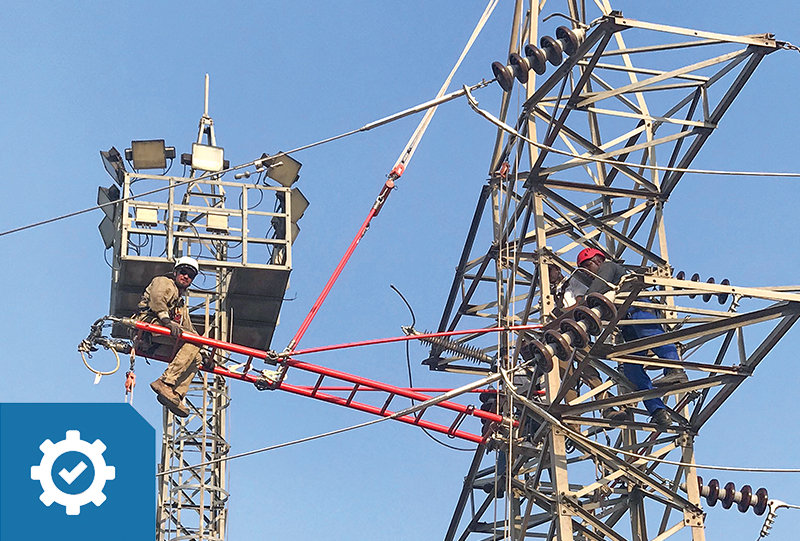
Driven by our core values of 'innovation' and 'social impact', Sterlite Power recently heralded in a pioneering new technology in India - Zero Shutdown Reconductoring, to address transmission congestion challenges. This unique project was successfully completed with the reconductoring of a 66 kV transmission line connecting Bengaluru's Electronic City under 'Live-line conditions.'
The line from Naganathapura substation connecting to Malgudi in Bengaluru was uprated with no shutdown on the line during project execution. This ensured that it was business as usual for consumers with no loss of revenue for the utility. This was the first case of reconductoring in live-line conditions in India.
Rapid urban evolution has spurred exponential demand for power. Ageing infrastructure and lack of space to set up greenfield projects is a key constraint in expanding power transmission to meet this growing demand.
The project doubled power transfer capacity of the transmission line. Uninterrupted power was ensured during execution and changeover by using bypass technique on the towers, using 'bare-hand' and 'hotstick' methods. The high-performance conductor installed in the lines provides better clearance from the ground and nearby buildings. We believe this revolutionary new solution can be scaled up and customised to address the needs of states in India with similar challenges.
Developed a unique and innovative solution that enabled reconductoring without causing any disruption in power supply to the local population and industry. The transmission asset was upgraded without shut down. Sterlite Power has successfully completed India’s first live-line reconductoring project in Electronic City, Bengaluru, for Karnataka Power Transmission Co. Ltd. (KPTCL).
LOCATION
Gurugram, India
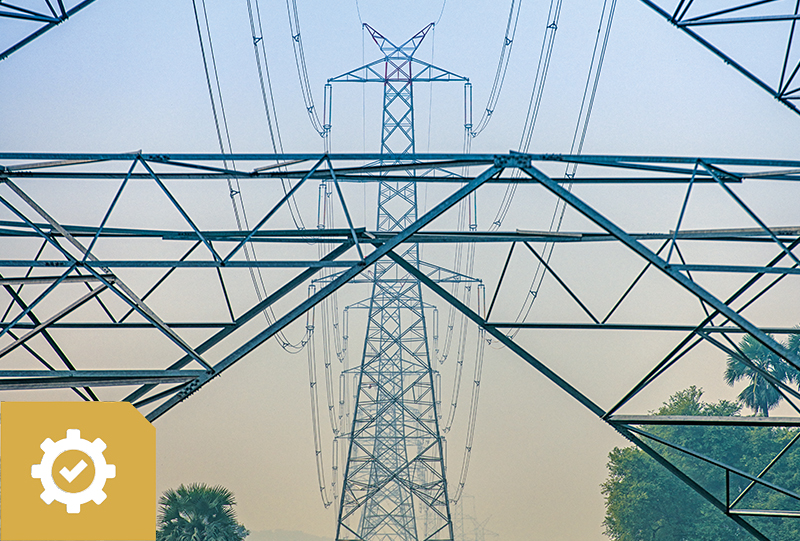
Under the Gurgaon Palwal Transmission Limited (GPTL) project, we are commissioning three gas-insulated substations and two bays. It faces major concerns regarding right-of-way issues.
Working through heavily forested lands and constructing a fully automated gas insulated substation adds to the complexity of the project.
More than 136 km line once commissioned will deliver over 3,000 MVA to parts of Gurugram and connect other substations located at Palwal, Rangla, Rajpur and adjoining areas of Meerpur and Kurah in Haryana. The aim is to satisfy the growing demand for power in the rapidly developing cities of Gurugram and Palwal – which being the manufacturing and service hubs are key to India’s economic development. Innovation in design and engineering enabled us to reduce the space footprint and preserve forested land.
We formed a dedicated team to simultaneously coordinate and ensure that we receive timely approvals from relevant entities, during the planning phase. We overcame the space constraint vis-à-vis the forested lands, with the construction of vertical substations. Further, we used monopoles in place of the conventional towers, reducing the land footprint by ~80%. This in turn helped preserve the region’s forests to a large extent. At the same time, we used micro-piling to create foundation for the monopoles, which also helped minimize the excavation impact on the soil.
LOCATION
Odisha, India
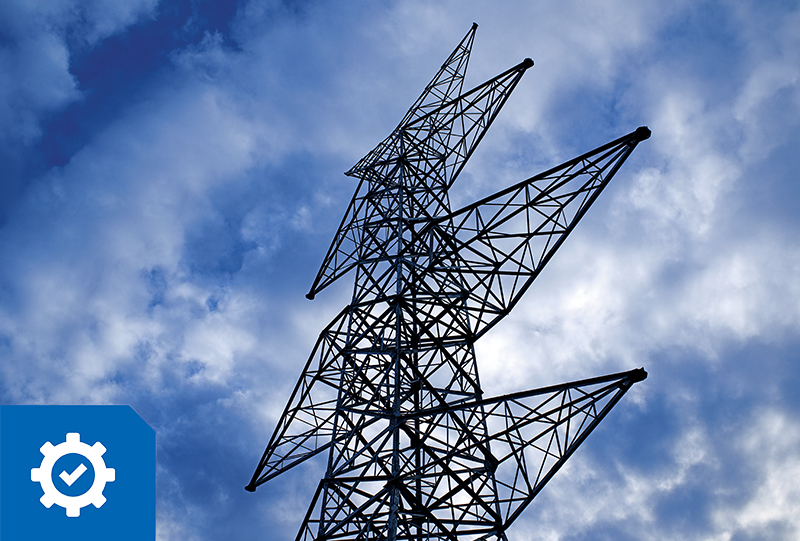
The coastal state is undergoing fast-paced industrialisation, on account of which it experiences growing demand for power. We developed transmission systems through the Odisha Generation Phase-II (OGPTL) project, comprising a 765 kV Jharsuguda-Raipur line and a 400 kV Sundergarh-Jharsuguda line.
Initially, our proposed transmission line overlapped with the existing lines for an industrial urban corridor. This corridor supplied power directly to vital industries in the region. Additionally, some sections of the transmission line also had severe rightof- way issues. We encountered resistance from native communities, where the line passed through tribal regions.
We obtained in all 86 statutory approvals, visiting 247 various government and private utility offices. This was the first time that a right-of-way compensation circular was released by the Odisha government for any transmission utility. Also, the OGPTL project was included in Project Monitoring Group of the Cabinet Committee on Infrastructure (CCI). In the end, we successfully commissioned the project in April 2019, three months ahead of its scheduled delivery date of July 2019, helping fulfil the state’s critical need for power infrastructure.
We began the project implementation with diligent planning and carried out our work with extreme sensitivity to ensure minimum outages, on account of any overlap with the corridor. Our teams simultaneously liaised with various entities during the planning phase to overcome the right-of-way issues. The issues concerning the tribal communities were handled with remarkable caution. We worked hard to spread awareness about the benefits of the transmission line and resolved conflicts.
LOCATION
Maharashtra, India
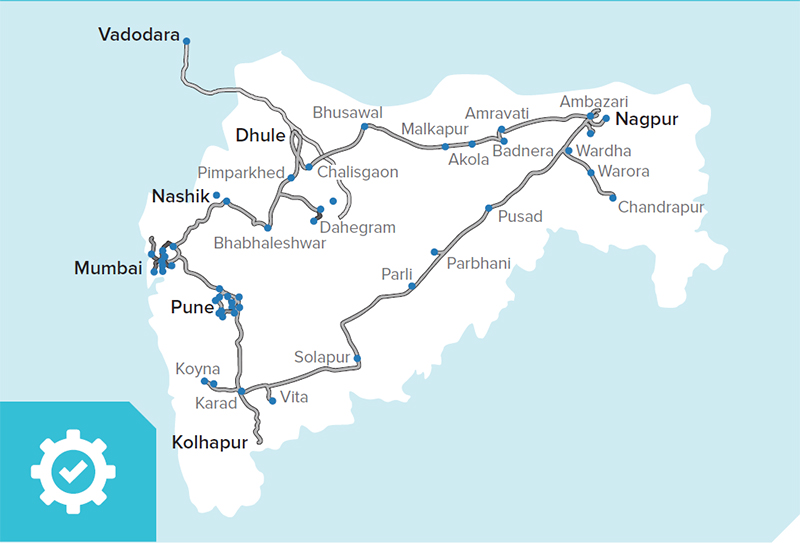
Given the broadband boom in India, the telecom sector has a constant need for reliable world-class communication infrastructure. The Convergence business unit leverages its OPGW fiber-based utility network to meet this growing demand.
The existing inter-city underground fiber infrastructure in Maharashtra is along the national & state highways and are always prone to frequent cuts due to constant road expansion & maintenance activities.
MSETCL is utilizing the MTCIL OPGW network for seamless voice, data, remote monitoring, tele protection, asset management and SCADA connectivity between substations, thereby providing higher value to its end customers, i.e., Distribution Utilities. MTCIL network which rides on existing transmission corridors is highly secured, has minimum on ground RoW challenges, provides a superior alternative with unmatched uptime & service assurance.
Due to the network’s inter-operability, OPGW network can be connected to other networks within and outside the state. The network has connected nine major cities in Maharashtra with 25 districts, 208 towns, and 994 gram panchayats. It has enabled service providers in the region to provide superior end customer experience by promising uninterrupted data flow.
A joint venture between Sterlite and Maharashtra State Transco, MTCIL* was formed to address the communication needs of MSETCL** and established 3,300 route km of reliable Optical Ground Wire (OPGW) fiber network in the state of Maharashtra. This first-of-its-kind state-wide OPGW fiber network in India derives commercial value by leasing spare fiber capacities to communication service providers. The ring architecture of the massive network connects the main hubs: Mumbai-Nashik- Dhule-Nagpur-Solapur- Karad-Pune-Mumbai.
*MTCIL – Maharashtra Transmission Communication Infrastructure Ltd.
**MSETCL – Maharashtra State Energy Transmission Company Ltd.
LOCATION
Gurugram, India
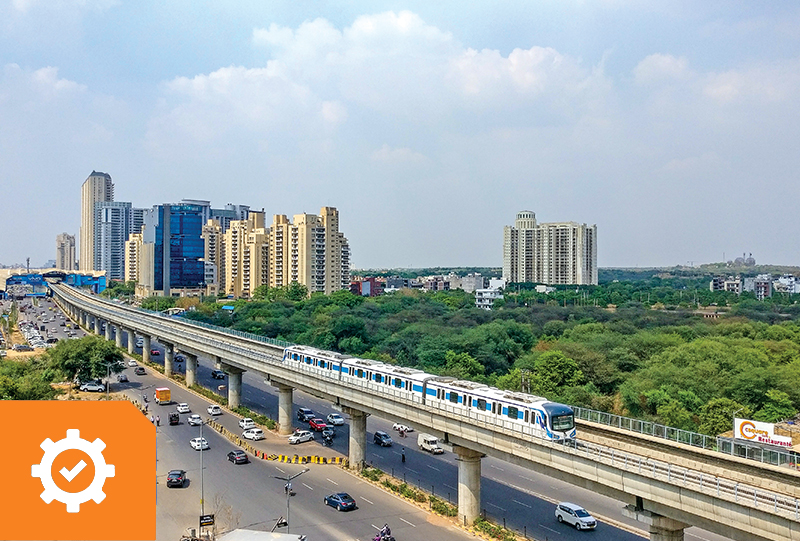
Smart cities across India are gearing up for the digital revolution by building the required infrastructure aimed at improving the lives of citizens. The foundation of such a digital infrastructure is the fiber network which serves as the backbone for all applications.
Convergence business fulfills the above need by providing a win-win partnership to design, build, finance, operate and maintain fiber infrastructure on a long-term partnership model. Gurugram is one of the first cities where Convergence business has invested and created a world-class optical fiber infrastructure for supporting current and future applications of the city.
Smart cities needs to have reliable data connectivity to support their smart infrastructure elements. The key challenge in front of smart city authorities is to create an ecosystem of partners who can design, build, finance, operate & maintain such infrastructure through a long term public private partnership model.
Sterlite Convergence is addressing the smart city needs with its superior fiber network design, build, operations and management skills. The smart city will benefit from the faster development of the telecom grade network, low cost of ownership, and higher uptime with a reliable network. Convergence has also created an open fiber network which can be utilized by telecom service providers, ISPs and MSOs thereby minimizing environment impact as it avoids multiple digging and laying of fibers.
We entered into a public-private partnership with
Gurugram Metropolitan Development Authority (GMDA)
to develop an optical fiber cable network that will
support the city’s connectivity and communication
needs. We have the right to build a core network
of 105 km in Gurugram as part of Phase 1 of this
project. Sterlite Power will manage & maintain the
network for 21 years.
The optical fiber cable network will power data-centric
services across the city and will provide connectivity
to government buildings, business clusters and critical
applications like security, surveillance and e-governance.
